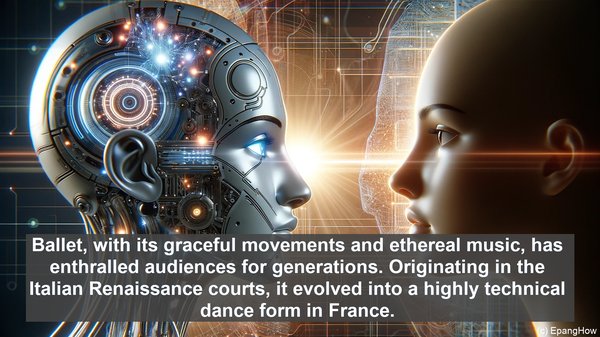Introduction: The Universal Language of Dance
Greetings, dance enthusiasts! Dance, an art form that transcends borders and cultures, has been an integral part of human expression for centuries. Today, we’ll embark on a virtual tour of various dance styles, each with its unique history, techniques, and cultural significance. And who better to guide us than ChatGPT, with its vast knowledge and insights? Let’s get started!
1. Ballet: The Epitome of Elegance
Ballet, with its graceful movements and ethereal music, has enthralled audiences for generations. Originating in the Italian Renaissance courts, it evolved into a highly technical dance form in France. The discipline of ballet demands years of training, focusing on precise footwork, leaps, and turns. From the iconic ‘Swan Lake’ to the powerful ‘Nutcracker,’ ballet productions continue to captivate audiences worldwide.
2. Hip-Hop: The Rhythmic Revolution
Born on the streets of New York City, hip-hop is more than just a dance style; it’s a cultural movement. Rooted in African and Afro-diasporic traditions, hip-hop encompasses a wide range of movements, from popping and locking to breaking. With its energetic beats and freestyle nature, hip-hop has become a global phenomenon, influencing not just dance but also music, fashion, and art.
3. Contemporary: Breaking Boundaries
In contrast to the structured nature of ballet, contemporary dance is all about freedom and exploration. Emerging in the mid-20th century, it rejects traditional forms and embraces improvisation and fluidity. Contemporary dancers often collaborate with choreographers, pushing the boundaries of movement and expression. It’s a style that’s constantly evolving, reflecting the ever-changing world we live in.

4. Salsa: The Dance of Passion
Originating in the vibrant streets of Cuba, salsa is a dance that exudes passion and joy. Combining elements of Afro-Caribbean and Latin dances, it’s characterized by intricate footwork, sensual hip movements, and dynamic partner work. Salsa clubs and festivals around the world are a testament to its enduring popularity, with dancers of all ages and backgrounds coming together to celebrate this lively style.
5. Breakdance: Defying Gravity
Breakdance, also known as b-boying or breaking, emerged in the 1970s as part of the hip-hop movement. Known for its acrobatic moves, power freezes, and intricate footwork, breakdance is a visually stunning style. It’s not just about the moves; it’s about the culture of battling and community. Today, breakdancing has gained recognition as a competitive art form, with international events like the Red Bull BC One showcasing the world’s best.

6. Tap: Rhythm in Every Step
Tap dance, with its percussive footwork, is a style that’s all about creating rhythms. Popularized in the United States, it has its roots in African, Irish, and English dance traditions. Tap dancers wear special shoes with metal plates, allowing them to produce intricate sounds. From the classic Hollywood musicals to contemporary stage productions, tap continues to be a crowd-pleaser, combining dance and music in a unique way.
7. Flamenco: The Soul of Spain
Flamenco, a cultural treasure of Spain, is a dance that’s deeply rooted in emotion and storytelling. With its origins in Andalusia, it’s a fusion of Romani, Moorish, and Spanish influences. Flamenco is known for its passionate movements, intricate hand gestures, and rhythmic footwork. Beyond the dance itself, it’s a complete art form, encompassing music, singing, and even poetry.
8. Kathak: Tales in Motion
Originating in Northern India, Kathak is a dance form that’s steeped in history and mythology. Traditionally performed in temples and royal courts, it’s characterized by intricate footwork, graceful spins, and expressive storytelling. The rhythmic patterns created by the dancer’s feet, accompanied by the melodic sounds of the tabla, make Kathak a truly mesmerizing experience.
